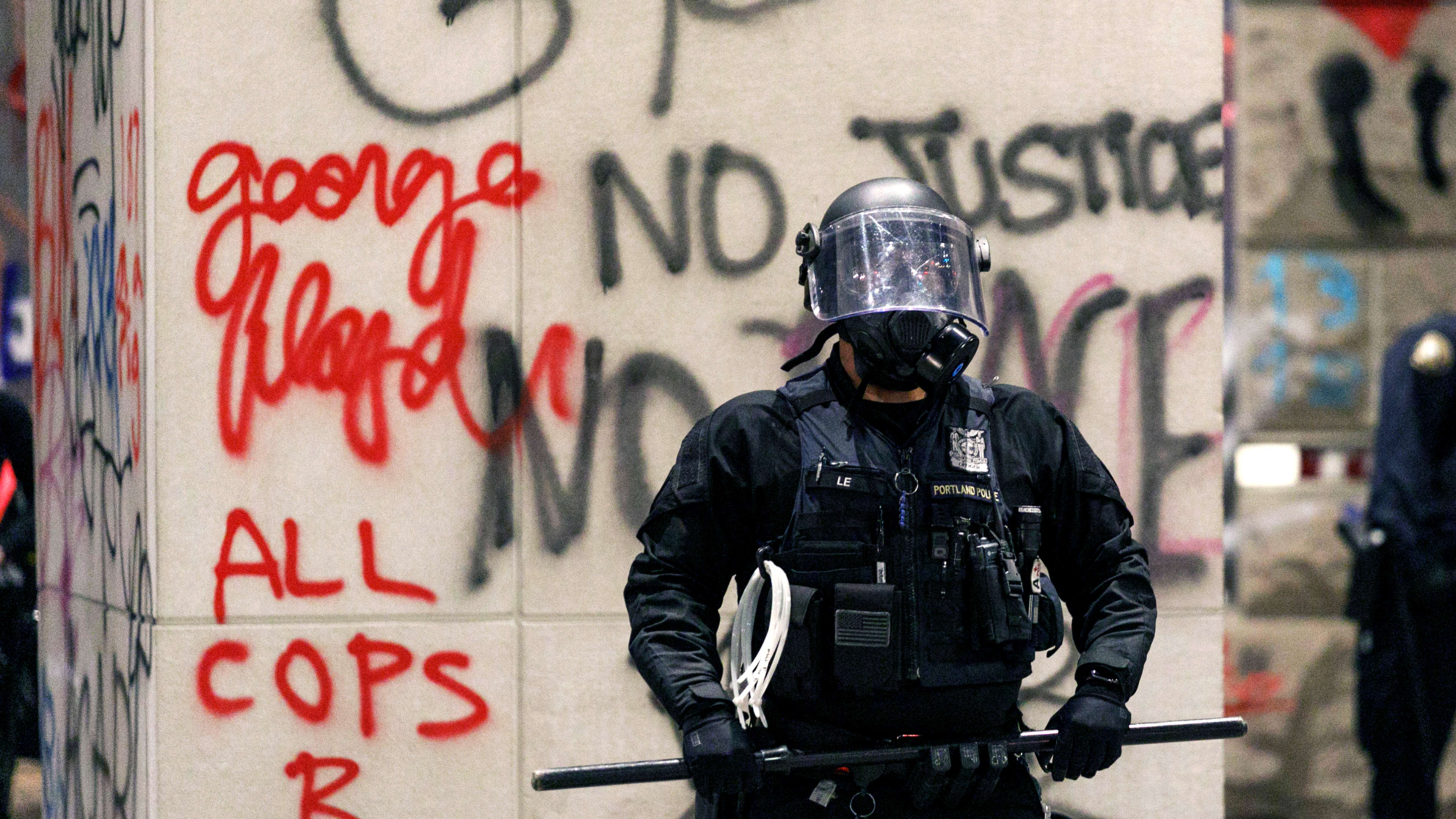As protests over the systemic brutality by law enforcement against Black Americans continue, an enduring image will be of a blue wall of police, outfitted in helmets and riot gear, prepared to stamp out would-be violence. In cities from Seattle to Boston, officers have been covered head-to-toe in battle-ready gear accessorized with batons, shields, and various firearms, appearing more suited to take on a hostile nation’s insurgents than protestors on U.S. soil. In many cases—and most prominently in Lafayette Square near the White House—initially calm police behavior transformed into aggression. Frequently, the shift to more combative behavior was unprovoked or unnecessary.
Much of the existing analysis of this police aggression has focused on the perspective of the protesters or observers facing the intimidating and imposing blue wall. But psychological research has consistently demonstrated that human behavior changes based on the clothes we wear. When police departments outfit their officers for battle, the uniforms and gear likely affect officer tendencies, leading to further unrest.
Nearly a decade ago, Bath University professor Hajo Adam and I researched whether an article of clothing can affect the behavior and actions of its wearer. Our original study was simple in its intent but profound in its implications. We found that when people put on a lab coat described as a doctor’s coat, they became more focused in their attention, consistent with the sustained concentration of doctors and scientists. However, when we described the same coat as a painter’s coat or participants just viewed a doctor’s coat, the coat had no effect on behavior. It was the combination of wearing the coat and having it described as a doctor’s coat that increased focused attention.
These uniforms have created enclothed blue aggression—a very dangerous mindset when your job is to protect and serve.”
This theory is supported in part by an older study dating back to 1977 that speaks directly to what we’re currently seeing in the debate on police aggression. Then researchers found that people aggressively shocked others when they put on a Ku Klux Klan outfit compared to wearing a nurse’s outfit. A more recent study found that when individuals put on police uniforms, they displayed attentional biases against individuals wearing hoodies. As we found before, these participants had to be wearing the uniform and not just looking at a uniform for the bias to emerge.
Police officers take an oath to protect and serve. But when they don military outfits and gear, which have become so customary, it’s likely that these wartime trappings tap into the psychology of enclothed cognition and provoke unwarranted aggression and violence. Police chiefs are tacitly encouraging a battle-ready psychological space at the outset, leaning inexorably toward aggression. Although those uniforms may offer some degree of protection to the officers, the symbolic power of their military associations puts them on offense and not defense. These uniforms have created enclothed blue aggression—a very dangerous mindset when your job is to protect and serve.
As Congress debates police reform and we all search for real tangible solutions, reducing military gear and weaponry for police is a critical step toward decreasing police brutality. Of course, the enclothed cognition perspective only adds one piece to the much larger puzzle. And the psychological effects of enclothed cognition pale in comparison to numerous other structural issues that must be addressed, from diversifying police departments and greater community engagement to union protection of overly aggressive law enforcement. But reducing enclothed blue aggression can be an important starting point, especially because the more lethal the weaponry involved, the more tragic the consequences of their use.
Going back to more friendly and less combat-oriented uniforms for police may not only help build community trust, but it will also make officers less likely to overreact. It will help officers move from enclothed blue aggression to enclothed blue protection.
Adam Galinsky is currently the chair of the Management Division at the Columbia Business School and coauthor of the book Friend and Foe.
Recognize your company's culture of innovation by applying to this year's Best Workplaces for Innovators Awards before the extended deadline, April 12.
